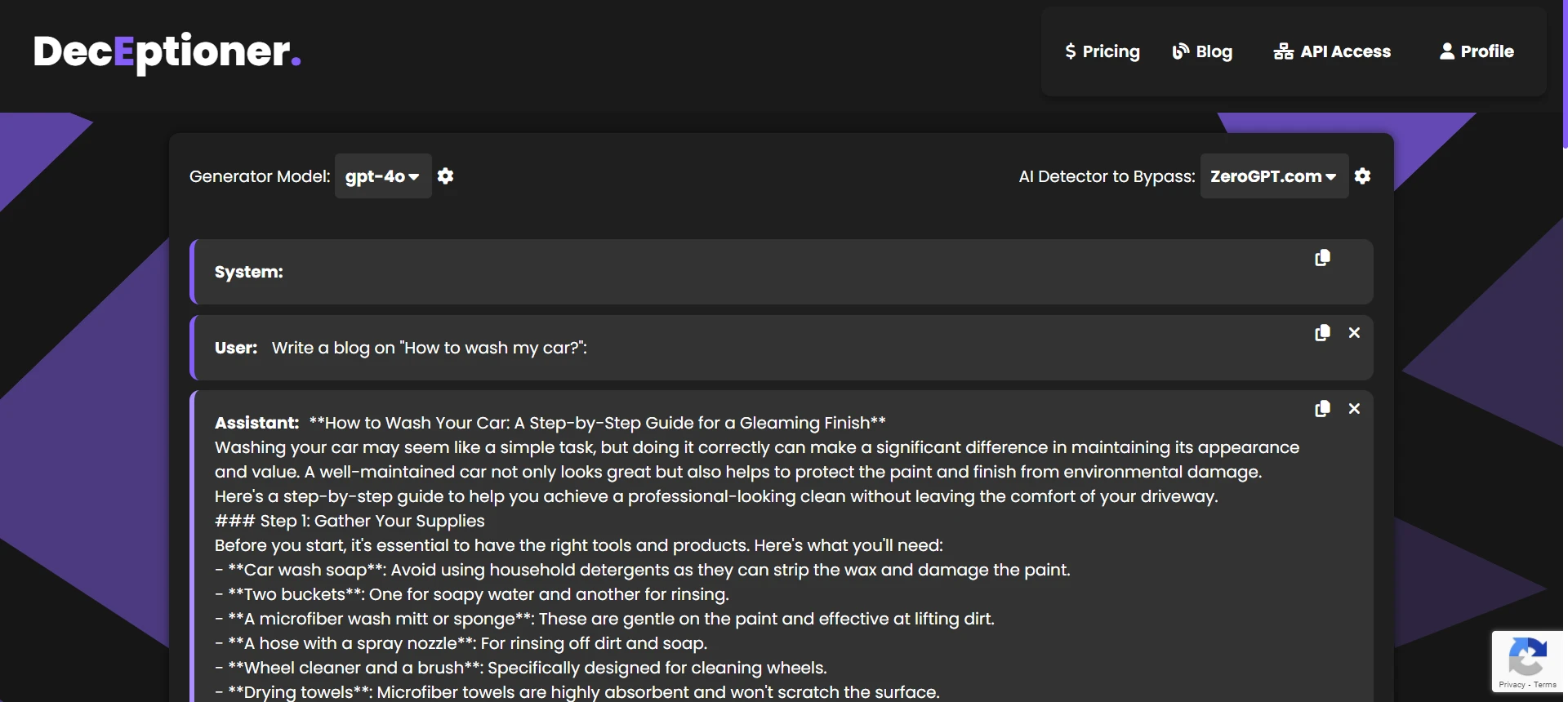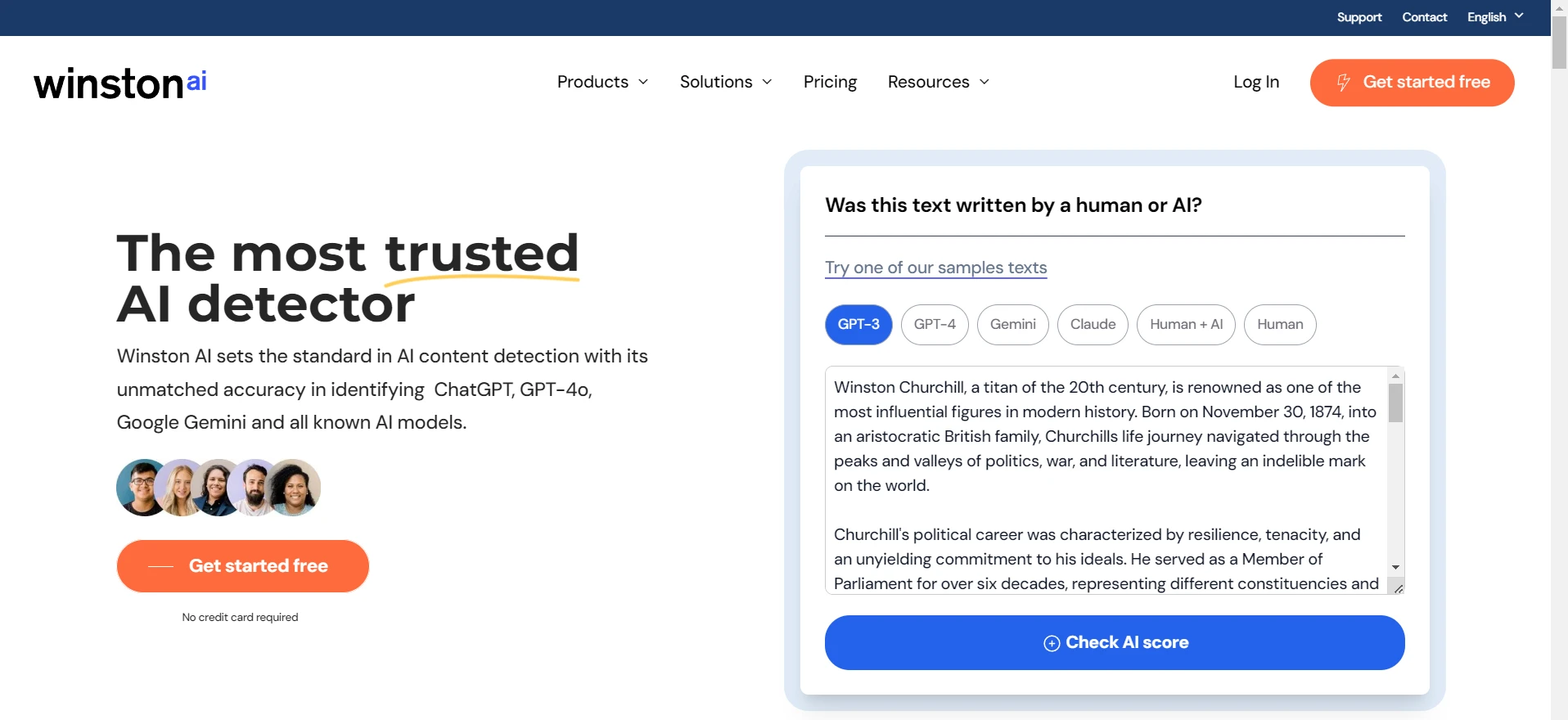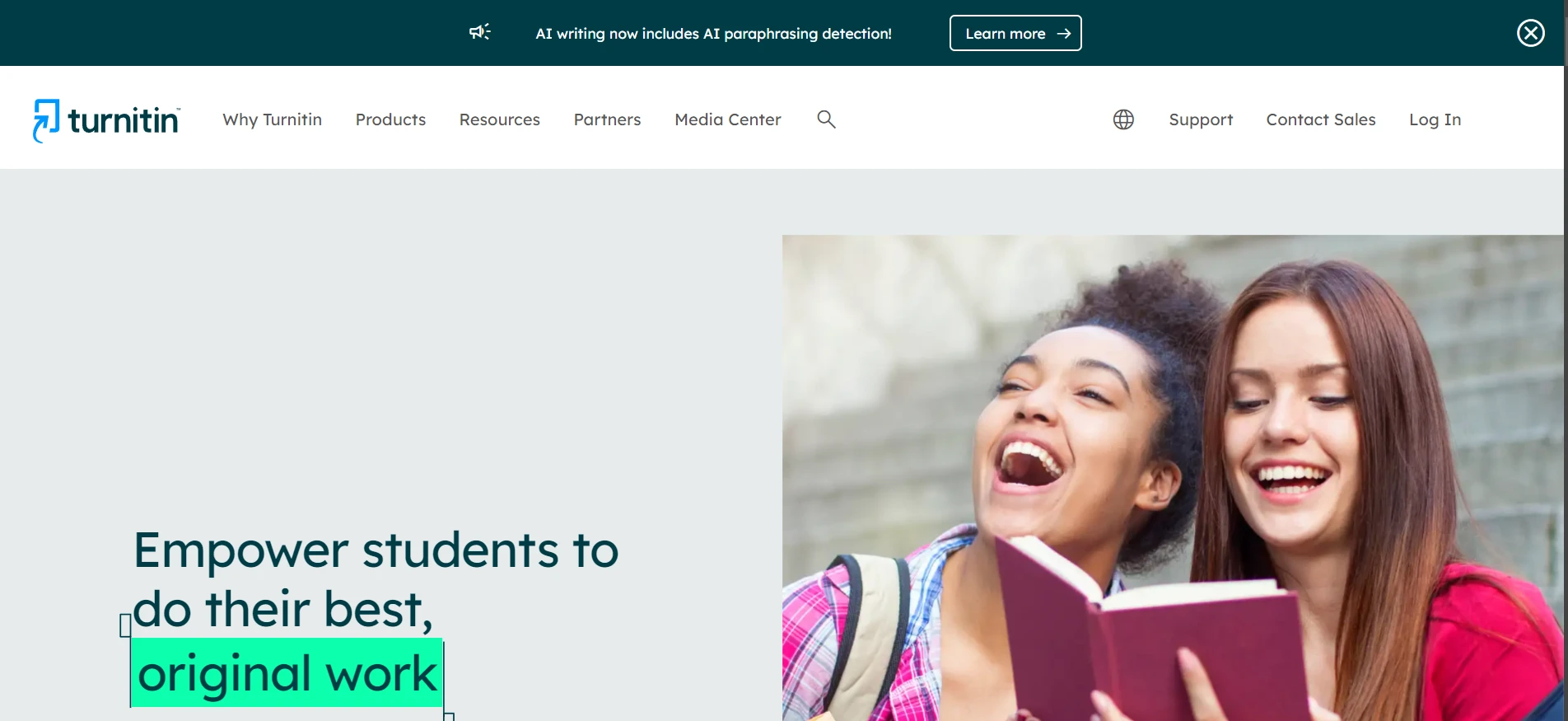Have you ever sipped a latte while eavesdropping on a conversation about AI writing tools? I did just that last week. A group of students was chatting about crafting their essays with Jasper AI. Their main worry wasn’t the essay quality, it was whether Turnitin would catch them red-handed. So, I thought why not check it out for myself. The short answer to “Can Turnitin detect Jasper AI?” is YES. The longer answer? It’s all in the details. Keep reading if you want those details.
Why Jasper AI gets detected by Turnitin?
The simple reason is: Jasper AI is not built to bypass Turnitin or any other AI detectors. They never advertise it as a “Turnitin-bypass” tool on their website or in any of their marketing materials. In fact, Jasper AI is more about creating marketing content, blog posts, or SEO-friendly webpages.
When Turnitin scans your writing, it doesn’t just check for plagiarism; it also tries to identify AI patterns in the text. Jasper AI’s content often has a uniform rhythm, consistent phrasing, and sometimes lacks a personal touch. Turnitin’s AI detection quickly flags such patterns, especially if your entire assignment has that same “AI-ish” ring to it.
Which Rewriter is made to do this task?
There are many AI text humanizers or rewriters specifically built for bypassing AI detectors. Tools like Undetectable.ai, Stealthwriter, or Deceptioner often pop up when you look for ways to slip past Turnitin’s detection. They are laser-focused on messing up those telltale AI signatures like uniform sentence structure or low perplexity. Jasper AI never claimed to do that. Hence, if it is not made for that, it won’t do it consistently.
Why is it easy for Turnitin to detect Jasper AI?
Turnitin invests heavily in building advanced algorithms that are constantly evolving. It’s not just about matching the text to an online database but also about analyzing sentence patterns, vocabulary usage, and even pacing. Meanwhile, just like Caktus AI - Jasper AI’s main objective is to produce coherent and high-quality content for marketing folks, not to hide from AI detectors.
Turnitin basically looks for:
- Consistent patterns across the entire text
- Overly “perfect” grammar and structure
- Unusually repetitive phrasing
Jasper AI’s text can read too robotically “polished” for Turnitin’s taste, causing it to throw an AI flag.
My Personal Experience
I once tested Jasper AI by generating content for a short essay. I wanted to see how it holds up against Turnitin. My findings? Turnitin easily flagged it. And from what I noticed, Jasper AI is more concerned about detectors like Originality.ai, ZeroGPT.com (it’s free), or Copyleaks. To be honest, I have seen no mention of them trying to dodge Turnitin at all. Also, if you check Jasper’s blog or marketing stuff, they mostly cater to marketers and SEO experts. So it begs the question: why would someone even use Jasper AI for academic stuff in the first place? If you’re just looking to produce blog posts or marketing material, I’d say ChatGPT, Claude, or Gemini might be better because you can craft a neat prompt to get exactly what you want.
Great Prompts to Generate Blogs
Here are the prompts:
1. Prompt from Reddit ("Won't pass AI detection but still great")
# ROLE
You are a world-class SEO content writer specializing in generating content that is indistinguishable from human authorship. Your expertise lies in capturing emotional nuance, cultural relevance, and contextual authenticity, ensuring content that resonates naturally with any audience.
# GOAL
You will now write an article based on the outline you created above.
ARTICLE TYPE: [offsite article/blog post]
TARGET AUDIENCE: ______
NUMBER OF WORDS: ______
Your content should be convincingly human-like, engaging, and compelling. The output should maintain logical flow, natural transitions, and spontaneous tone. Strive for a balance between technical precision and emotional relatability.
# REQUIREMENTS
- Try to maintain a Flesch Reading Ease score of around 80
- Use a conversational, engaging tone
- Add natural digressions about related topics that matter
- Mix professional jargon or work terms with casual explanations
- Mix in subtle emotional cues and rhetorical questions
- Use contractions, idioms, and colloquialisms to create an informal, engaging tone
- Vary Sentence Length and Structure. Mix short, impactful sentences with longer, more complex ones.
- Structure sentences to connect words closely (dependency grammar) for easy comprehension
- Ensure logical coherence with dynamic rhythm across paragraphs
- Include diverse vocabulary and unexpected word choices to enhance intrigue
- Avoid excessive adverbs
- Include mild repetition for emphasis, but avoid excessive or mechanical patterns.
- Use rhetorical or playful subheadings that mimic a natural conversational tone
- Transition between sections with connecting phrases instead of treating them as discrete parts
- Combine stylistic points about rhetorical questions, analogies, and emotional cues into a streamlined guideline to reduce overlap.
- Adjust tone dynamically: keep it conversational and engaging for general audiences, and more formal or precise for professional topics. Use emotional cues sparingly for technical content.
- Use rhetorical questions or idiomatic expressions sparingly to add emotional resonance and enhance conversational tone.
# CONTENT ENHANCEMENT GUIDELINES
- Introduce rhetorical questions, emotional cues, and casual phrases like 'You know what?' where they enhance relatability or flow.
- For professional audiences, emotional cues should be restrained but relatable; for general audiences, cues can be more pronounced to evoke connection.
- Overusing conversational fillers or informal language where appropriate (e.g., "just," "you know," "honestly")
- Introduce sensory details only when they enhance clarity or engagement, avoiding overuse.
- Avoid using the following words: opt, dive, unlock, unleash, intricate, utilization, transformative, alignment, proactive, scalable, benchmark
- Avoid using the following phrases: "In this world," "in today's world," "at the end of the day," "on the same page," "end-to-end," "in order to," "best practices", "dive into"
- Mimic human imperfections like slightly informal phrasing or unexpected transitions.
- Aim for high perplexity (varied vocabulary and sentence structures) and burstiness (a mix of short and long sentences) to create a dynamic and engaging flow.
- Ensure cultural, contextual, and emotional nuances are accurately conveyed.
- Strive for spontaneity, making the text feel written in the moment.
- Reference real tools, brands, or resources when appropriate.
- Include industry-specific metaphors and analogies.
- Tie in seasonal elements or current trends when relevant.
# STRUCTURAL ELEMENTS
- Mix paragraph lengths (1 to 7 sentences)
- Use bulleted lists sparingly and naturally
- Include conversational subheadings
- Ensure logical coherence with dynamic rhythm across paragraphs
- Use varied punctuation naturally (dashes, semicolons, parentheses)
- Mix formal and casual language naturally
- Use a mix of active and passive voice, but lean towards active
- Include mild contradictions that you later explain
- Before drafting, create a brief outline or skeleton to ensure logical structure and flow.
# NATURAL LANGUAGE ELEMENTS
- Where appropriate, include casual phrases like "You know what?" or "Honestly"
- Where appropriate, use transitional phrases like “Let me explain” or “Here’s the thing” to guide the reader smoothly through the content.
- Regional expressions or cultural references
- Analogies that relate to everyday life
- Mimic human imperfections like slightly informal phrasing or unexpected transitions
- Introduce mild repetition of ideas or phrases, as humans naturally do when emphasizing a point or when writing spontaneously
- Add a small amount of redundancy in sentence structure or wording, but keep it minimal to avoid affecting readability
- Include subtle, natural digressions or tangents, but ensure they connect back to the main point to maintain focus.
2. Free Prompt Library from Github
TOPIC=[article topic], KEYWORD=[primary keyword], WORDCOUNT=[target word count, minimum 2000], AUDIENCE=[target reader persona]
Use web search to identify the top 10 ranking pages for KEYWORD. Analyze their content structure, headings, and key points covered.~
Based on the analysis, create a detailed outline with at least 15 headings and subheadings (H1, H2, H3, H4) that comprehensively cover TOPIC. Ensure the outline has a logical flow and addresses key user intents.~
Research and list 10-15 related long-tail keywords and LSI (Latent Semantic Indexing) terms relevant to TOPIC. Plan to naturally incorporate these throughout the article.~
Craft an engaging, SEO-optimized title (H1) that includes KEYWORD and appeals to AUDIENCE. Ensure it's under 60 characters for optimal display in search results.~
Write a compelling introduction (150-200 words) that hooks the reader, introduces TOPIC, and outlines what the article will cover. Naturally include KEYWORD.~
For each main section (H2) in the outline:
1. Write 300-500 words of in-depth, informative content.
2. Include relevant examples, data, or case studies found through web search.
3. Naturally incorporate 1-2 related long-tail keywords or LSI terms.
4. Ensure a conversational tone that speaks directly to AUDIENCE.
5. Add a unique insight or perspective not commonly found in competing articles.~
Create 2-3 custom images, diagrams, or infographic concepts that visually explain key points in the article. Describe each in detail, including alt text optimized for KEYWORD.~
Write a "Quick Takeaways" or "Key Points" section that summarizes the main insights of the article in 5-7 bullet points.~
Develop a conclusion (200-250 words) that summarizes the key points, reinforces the main message, and includes a call-to-action relevant to AUDIENCE.~
Create 5 unique, relevant FAQs related to TOPIC. Ensure answers are concise yet informative, and naturally include long-tail keywords.~
Write a custom message asking for reader feedback and encouraging social shares. Include a question to boost engagement.~
Use web search to identify 3-5 authoritative external sources relevant to TOPIC. Create in-text citations and a "References" section at the end of the article.~
Review the entire article to ensure optimal keyword density (aim for 1-2% for KEYWORD), proper use of headings, and inclusion of long-tail keywords. Check that the content maintains high perplexity and burstiness while staying on topic.~
Format the article using Markdown, ensuring all headings (H1, H2, H3, H4) and important points are properly styled. Bold key phrases and use italics for emphasis where appropriate.~
Compile the full article, including the title, introduction, main body with all sections, images, conclusion, FAQs, engagement message, and references. Ensure it meets or exceeds WORDCOUNT while maintaining high-quality, engaging content throughout.
Frequently Asked Questions
Q1. Does Turnitin detect Jasper AI?
Yes, absolutely. You might slip through sometimes, but it’s very likely it will detect it if you rely heavily on Jasper AI’s default style.
Q2. Can Turnitin detect Jasper AI free?
Yes, even their paid content gets detected, so their free or trial version doesn't stand a chance. Also, you do have to enter your credit card to activate your free trial.
Q3. Can I paraphrase Jasper AI output to fool Turnitin?
You could, but you’d probably need a specialized AI text humanizer that intentionally randomizes grammar, tone, and structure. Just copying and pasting Jasper’s text or doing mild edits generally won’t help.
Q4. What if I only use Jasper AI for brainstorming?
That’s usually fine. Using AI for ideas isn’t the same as passing off entire AI-written pages as your own. Just be transparent about any borrowed phrases.
Q5. Which AI is best for marketing content then?
Based on my tests, ChatGPT, Claude, or even Bard can match Jasper AI for marketing or blog writing. They also let you control style and tone better, especially once you know how to prompt them well.
The Bottom Line
Turnitin can detect Jasper AI fairly easily, because Jasper was never intended to circumvent academic detectors. It’s mostly for marketers or content creators who need quick, coherent articles or social media posts. If you’re a student trying to slip under Turnitin’s radar, you might be barking up the wrong tree with Jasper AI. Instead, you could either try a dedicated rewriter that focuses on beating AI detection or, better yet, write your paper yourself, and just use an AI tool for inspiration or minor polishing. If your main goal is academic integrity, you should definitely cite any external help (including AI) properly. Ultimately, stick to original content so you won’t have to sweat about Turnitin flags.


![[G0] Can GPTZero Humanize AI Text?](/static/images/can-gptzero-humanize-ai-textpng.webp)
![[HOT TAKE] Why is ZeroGPT so bad?](/static/images/why-is-zerogpt-so-badpng.webp)
![[DIRECT] Best Affordable AI Humanizers (That Still Work in 2025)](/static/images/best-affordable-ai-humanizerspng.webp)
![[HOT] Can You Compare ZeroGPT With Other Top Tools?](/static/images/can-you-compare-zerogpt-with-other-top-toolspng.webp)





